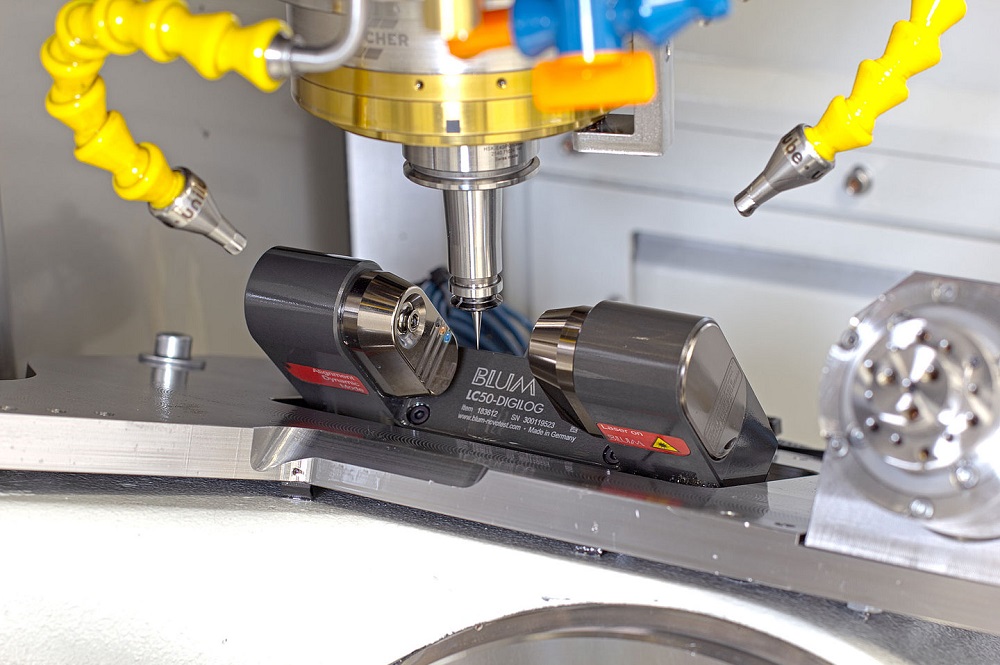When it comes to carbide tools, there are always products that push the boundaries of what was previously considered technically possible. Some of these products are made by Zecha Hartmetall-Werkzeugfabrikation GmbH,like a two-flute end mill with a diameter of 10 µm or a PCD tool that has 42 cutting edges with a diameter of 6 mm. This leads to the question of how to measure such small tools, which are many times smaller than a human hair, and how to ensure that the machining process is reproducible.
“It’s especially important that measurement takes place in the machine, because this is the only way to record and compensate for all influencing factors,” says Marcus Becker, milling application engineer at Zecha.
Since machine manufacturer Kern has been integrating laser measuring systems from Blum into its precision machines for many years and Zecha has its own high-end machine, it did not take long to decide on the LC50-DigiLog
In contrast to conventional laser systems that generate a single measured value when the laser beam is shaded to a certain degree, Blum says that the LC50-DigiLog laser measuring system determines the actual measured value based on thousands of individual values per second. In addition, thanks to the large number of measured values per cutting edge, the system detects contamination and cooling lubricant deposits on the tool and calculates them out of the result.
Unsurprisingly, in addition to tool measurement, tool breakage detection is also an important issue with micro-tools. This is where non-contact measurement at high machining speeds, made possible with the DigiLog system, offers great advantages.
Zecha also uses LC-Vision software from Blum-Novotest: measuring and visualisation software that generates, visualises and evaluates a variety of measurement applications on the control screen.
More information www.blum-novotest.com















